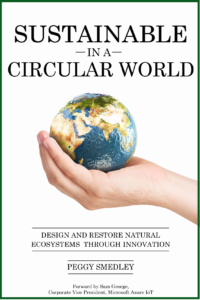If we are going to have conversations surrounding sustainability, then we must also have conversations around data centers. We all know many large organizations have ambitious targets to meet net-zero emissions by the year 2050. The only way we are going to hit these goals is if we pay close attention to data centers.
Traditionally, data centers tend to consume a lot of energy. In fact, C&C Technology Group reports data centers spend roughly 1,000 kWh per square meter, which is about ten times the power consumption of a typical American home. Yikes.
Certainly, many in the technology world see this as an opportunity ripe for innovation. To that end, Gartner predicts 75% of IT organizations will implement data center infrastructure sustainability initiatives by 2027. The good news is we are beginning to see a lot of innovation from technology companies as well.
In an investor webinar earlier this year, Sandra Rivera, executive VP and general manager of data center and AI group, Intel, says, “The long-term demand for compute continues to accelerate. We see a market opportunity of more than $110 billion for Intel’s data center and AI (artificial intelligence) logic silicon business by 2027.”
The call centered around three key issues:
- Data center CPU market and X86 market as a solid growth market, as the demand for compute and especially compute cores continue to accelerate.
- The company’s strong progress on its process and product roadmap and its path to regaining leadership and outgrowing the market.
- The accelerating growth in AI across its portfolio of CPUs, accelerators, and software, as the company aims to not only proliferate AI as a workload, but also to truly democratize it with its open ecosystem strategy.
The data center focus is an interesting one, particularly as conversations surrounding sustainability continue to ramp up. A data center’s carbon footprint is made up of both embodied and operational carbon emissions. Embodied carbon emissions are associated with construction and set up of a data center, while operational carbon emissions are associated with running the data center.
Intel DCM (Data Center Manager) improves a data center’s operational carbon footprint—and it does this by simplifying the complex task of measuring, modeling, and controlling the carbon emissions of devices. At the same time, the technology gives the facility managers and IT professionals the technology needed to reduce the total cost of ownership of data centers—all while improving the data center’s efficiency at the same time.
Certainly, this is only one way Intel is helping its customers meet its sustainability objectives—and Intel is delivery on many fronts. We are seeing many changes. In fact, some of these changes are occurring faster than we thought while others are occurring slower. That is why companies need to be better prepared.
“As the market for mainstream compute grows, the requirements for data center infrastructure are expanded,” says Rivera. “Today’s born in the cloud businesses and the growth of microservices require a different category of processors that deliver higher core density at lower power.”
Having insights to make proactive decisions about computing goals can be a huge win for companies looking to improve their sustainability game. What next step will you take on your sustainability journey?
Want to tweet about this article? Use hashtags #IoT #sustainability #AI #5G #cloud #edge #futureofwork #digitaltransformation #green #ecosystem #environmental #circularworld


